Replacing heating radiators in the apartment: a detailed
Replacing heating radiators in the apartment with their own hands occurs in several stages, which we will examine in this article. We will also touch on the features of the choice of new batteries and the material of their connection. So let's get started.
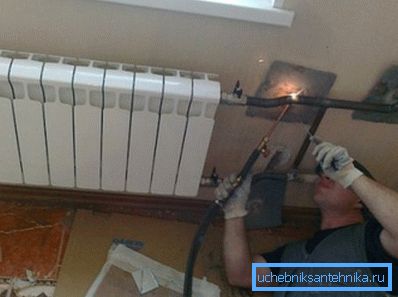
General provisions
What could be the reason for installing new radiators?
There are several main causes:
- Blockage. Over the years, debris accumulates inside pipelines, which prevents the passage of coolant, which negatively affects the performance of the heating system.

- Emergency situation. External mechanical damage, water hammer, excessive increase in internal pressure can lead to leakage or even rupture of the radiator. In this case, either the old construction is repaired or the new is installed.
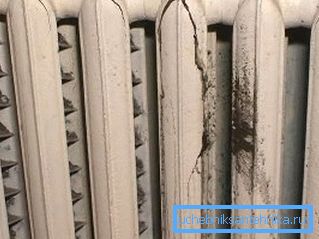
- Unattractive appearance. Old white harmonicas cannot boast of their aesthetics, and mostly hide behind curtains or furniture in order not to spoil the overall interior of the room. But the new design models have enough beauty to become the main decoration of your home.
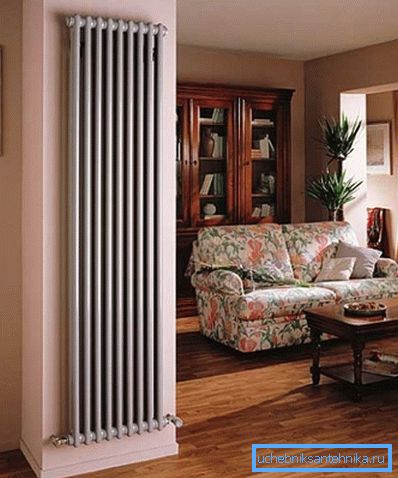
- Poor performance. Old heating systems are inferior in power to more sophisticated new ones.
- Wear. Any material has its life and sooner or later, but it comes to an end. For such structures, an emergency situation may occur at any time, and it is better not to wait for it.
As you can see, the reasons for updating radiators are enough. And if some of them can be postponed at least until the overhaul, others will require an immediate solution to the problem.
You can, of course, call the master for this, but, first, you will have to tear a certain amount from the family budget to pay for his services, and second, in some cases you will have to wait long enough while remaining in the cooling room. Therefore, you should know how to replace the radiators with their own forces, at least in general terms.
Stages update
Installation and replacement of radiators begins with the choice of material of the new model that you will install.
Material selection
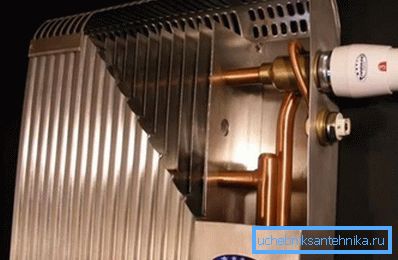
According to the material used, the heating batteries can be as follows:
| Title | Characteristics |
| Aluminum |
|
| Cast iron |
|
| Steel |
|
| Bimetallic |
|
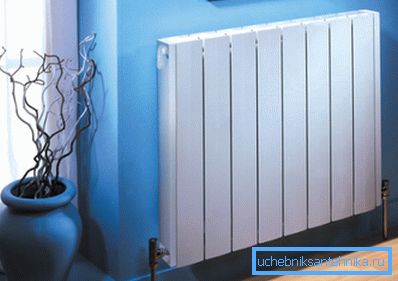
Tip: when choosing aluminum pipes, make sure that they do not come into contact with antagonist metals during installation, as this will provoke the occurrence of corrosive processes.
Permissions
Before starting work, coordination with the relevant public utilities and administrative departments is necessary, since it will be necessary to drain the coolant from the common riser and overlap it. You should not try to do it yourself, not only can you thus harm the heating system of the whole house, but you also get a large fine.
Advice: It is recommended to submit the necessary applications as early as possible. Because the decision-making by public servants can be delayed for quite a long time.
Assembly work
Now we will directly analyze how to replace the heating radiator in the apartment:
- Remove the old design. Here you can go two ways, depending on the type and complexity of the connection:
- Unscrew the threaded pipe connections. To do this, you will need an adjustable wrench and a pipe wrench.
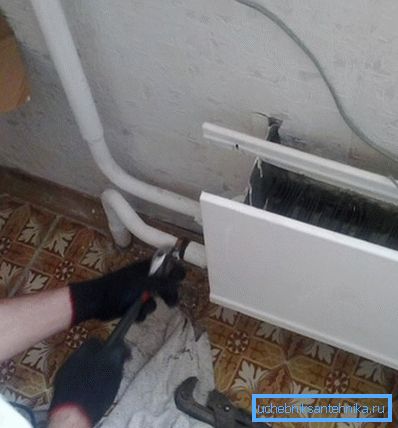
- Cut "grinder." This method is used in cases when the thread is too deformed and does not lend itself to the keys or when the previous connection was made by welding.

- Customize and hang a new radiator. To correctly set the horizontal and vertical structures will require a spirit level. Otherwise, if you neglect this process, you will have serious problems connecting to the riser.
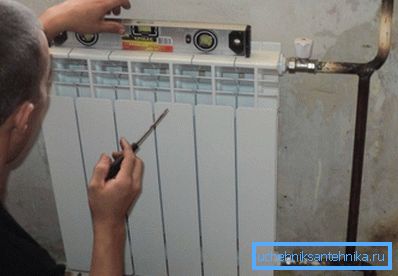
- We are going to assembly equipment. This includes the installation of elements such as:
- Radiator plugs.

- Ball Valves.
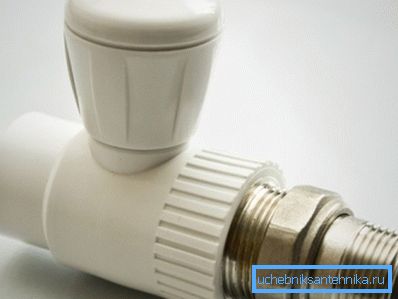
- Bypasses
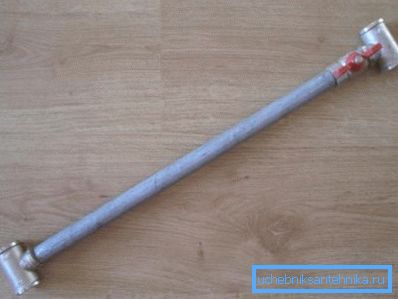
- Crane Mayevsky.
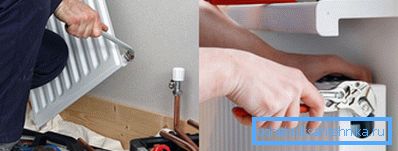
- Cut the thread. It is carried out with the help of a plate, but only if you have chosen the appropriate method of connecting the battery to the riser, that is, the threaded one.

Tip: for large volumes, it is recommended to use an electrical screw die for threading. This tool will allow you to complete the task much faster and with less effort.
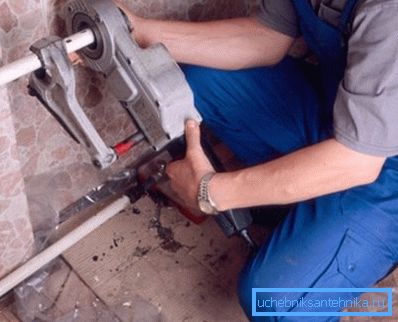
- Connect the radiator to the riser. If the previous item was made, then threaded fittings are used, if it was missed, then welding is performed. It is also possible the implementation of the connection using polypropylene or metal-plastic elements, this moment we will touch on a little lower.

Choosing a connection scheme
It is possible to implement several variations of the connection of the radiator with the riser:
| Connection type | Description |
| Without jumpers | An American crane is mounted, thanks to which the structure can be easily removed for finishing the wall behind it |
| With jumper and without crane | A special jumper is installed that allows at any time to shut off the flow of coolant to the radiator |
| With lintel and tap | A crane on the bridge adjusts the flow of the fluid passing through it |
Connection material
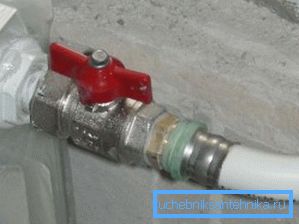
Replacing the heater radiator usually takes place using one of three materials:
- Metal. It is characterized by high mechanical strength, substantial cost and complexity of installation.
- Polypropylene. It is cheap, simple, but due to temperature limitations it is also dangerous, since a discontinuity is possible when the coolant is supplied with a temperature exceeding +95 degrees Celsius.
- Metal plastic. The most rational and beneficial material for the task. It has an acceptable price, elasticity, ease of installation work and resistance to high temperatures.
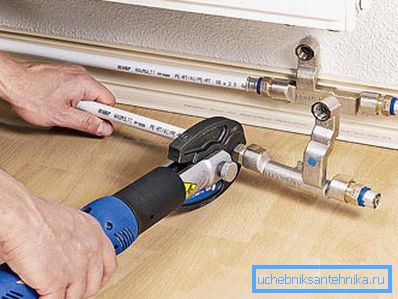
System testing
After completing all the necessary work, ask the people who blocked the riser to reopen it. It is very important to immediately monitor possible violations of the operation of the radiators so that later they do not have to re-request the necessary permits and not repair new breakdowns.
Conclusion
In the article we looked at how to replace the heating radiator. This task, though rather complicated, is completely doable on its own. The reason may be, as the occurrence of an emergency, or simply the desire to update the interior of your apartment during the next overhaul.

On the provided video you will be able to familiarize yourself with additional information regarding the materials presented. Successful installation work!